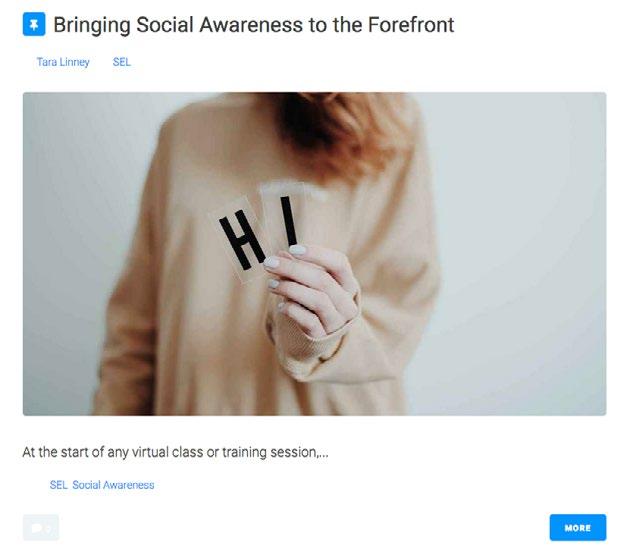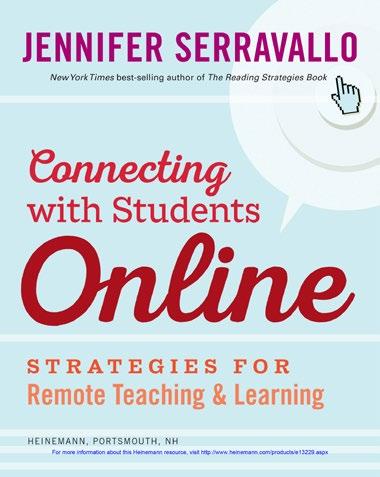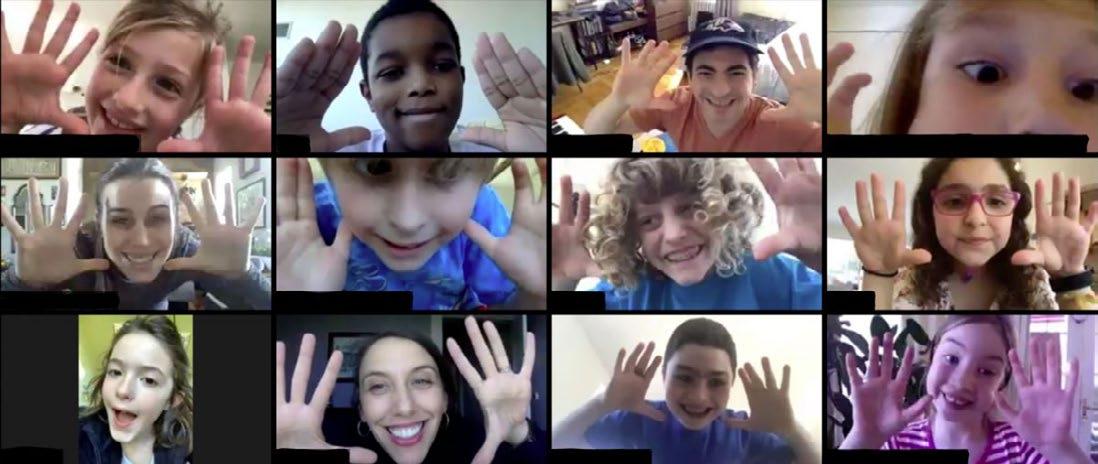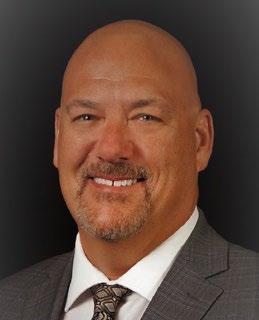
9 minute read
As We Move Into 2021
Article
Richard Lange

Deanne Levy
As We Move into 2021, What Are the Remote Learning Priorities
As we move into 2021, little did we know that when ISBE enacted a law on June 7, 2019, that allows school districts statewide to utilize e-learning days in lieu of emergency days, that educators across the state and the country would still be using a variety of distance learning models to conduct classes from remote locations. While some schools started with hybrid models of in person activities as well as remote, some districts have been doing 100% e-learning since last March.
With that in mind, the authors of this paper decided to conduct an informal survey to see what kinds of challenges school leaders and teachers were facing. With the help of Dr. Bobb Darnell, educator and
The top two [challenges] that educators selected... were “SEL health and too much screen time for both students and teachers” and “Getting all student to contribute during remote lessons.”
professional development consultant, a survey was created in November that asked Chicagoland educators
to identify their top three challenges from a list of 15 items that seemed to be at the forefront as schools address remote learning. We would like to address some of the responses. (See survey results listed below.) The top two that educators selected (70+ educators responded to the survey ranging from 1 to 51 years of experience in the field of education) were “SEL health and too much screen time for both students and teachers” and “Getting all students to contribute during remote lessons.”
SEL health and too much screen time was the number one concern for our
survey responders. This is a concern for fatigue with students, teachers as well as parents. As a result, newly coined phrases such as “zoom fatigue” and “screen exhaustion” have become part of our daily lexicon. The American Academy of Child and Adolescent Psychiatry reported in February that now on average, children ages 8-12 in the United States spend 4-6 hours a day watching or using screens, and teens spend up to 9 hours (American Academy of Child and Adolescent Psychiatry, 2020).
To encourage positive social emotional health and reduce fatigue in children and adults during this time of distance learning, the following best practices may be used to promote wellness:
• Recognize that not all screen time
is equal. Although the hours may be stacking up for all in front of screens, providing students with rich, targeted content matters. Differentiating content for all student’s readiness levels, interests, and learning preferences is a best practice for both remote and in-person learning as it encourages an excitement for learning and reduces feelings of exhaustion. In our survey, educator’s concern about how to differentiate content during distance learning came in at fourth place. There are many resources to help teachers virtually differentiate including (but not limited to) creating interactive discussion boards, using breakout rooms to group students according to areas based upon student’s strengths or areas of need, using online free libraries to offer leveled book options, and incorporating digital manipulatives into lessons.
• Teachers should not be afraid to move on from content if it is not
meeting student’s needs. Concerns regarding how to select and abandon content ranked 8th on our survey. As a best practice, teachers should select research-based content based upon on student’s academic needs and interests in both remote and in-person classroom settings. If the
content is not sparking engagement, or, if students are not progressing based upon regular informal assessments, it is time to move on and seek new content.
• Look for opportunities to connect
with individual students. Study after study shows the positive impact of strong teacher-student relationships (Sparks, 2019). By investing in the time for one-on-one chats, both teachers and students experience more joy, empathy and deeper understanding of needs.
Another challenge our survey confirmed was that educators are concerned about how to get all students to contribute during remote
lessons. Students may be experiencing anxiety or trauma during the pandemic, a lack of accessibility to content, challenges with technology, or they may be having difficulty focusing during virtual lessons (or a combination of the above). In addition, some students may not want to keep their camera on during their instruction if they are uncomfortable displaying their home life.
Student engagement looks very different than it has in the past, and as a result: • clear communication regarding expectations for participation is vital • explicit instruction of social and emotional skills can provide students with the support they need to engage during distance learning • reviewing with students how to use a calendar, organizational tips and tricks, as well as • teaching students how to recognize they are feeling tired or fatigued
are just a few of the skills that can be taught.
Many students also struggle with selfdirection during traditional in-person learning, and this struggle can be compounded during distance learning, which was also reflected in the survey results we received. Teaching students how to create personal learning goals and set expectations for their own engagement will help support their self-direction. In addition, scheduling one-on-one check-ins with students and their families can go a long way of understanding potential barriers to engagement and planning next steps.
In addition to the highly ranked concerns discussed above, there were also survey items that received very low tallies with approximately two votes each. They included, “Parents and/or tutors helping students too much” and “Challenges when parents are sending negative emails to the principal about their teaching skills.”
During the author’s meetings with teachers before the pivot to remote instruction last March, these concerns were discussed regularly. Several teachers the authors worked with discussed that not only was the home computer set up in an area that was not very conducive for homework, (i.e., a computer being used on the kitchen table), lots of noise and distractions in the background and siblings needing to share the computer were compounding the problem. We heard that many parents were right behind their child guiding them with (sometimes wrong) answers to a lesson. The authors also frequently heard about tutors looking up answers on behalf of students. One reason these items have a low ranking on our survey could be that these issues may be resolving themselves somewhat as families become more accustomed to managing remote learning.
Another item at the bottom of the list was how to initiate various types of brain breaks and chair exercises. This item may have scored low on our survey because teachers may already realize how important it is for students to get up and move, as this is a best practice in both in-person and remote learning. One principal shared that this item was so important that she was giving awards to the teacher who had the most unique lessons that asked students to be actively moving. She would then take the winning lesson and share this activity with her entire staff.
In the “fill in the blank’’ section, educators were able to add their own items that were not a part of the survey. Some of the free responses included were: make learning as relevant as possible, how to create in class discussions, enhancing literary skills, how to manage breakout groups, what can principals realistically expect from teachers, and how to get students to interact with each other during online learning. All of these issues are very critical at all grade levels. The biggest challenge reported for administrators is how much to expect from their staff members. Many are frustrated since we are still exploring new territory after 7 to 8 months of unprecedented distance learning.
Informal surveys such as this one we’ve discussed here help to identify immediate concerns, target professional development needed for staff, and determine if any additional resources would be helpful. On the following page please find the full informal survey and results.
As 2020 comes to a close and the second semester begins shortly, many administrators are reassessing hybrid situations knowing how important it is
Survey Results and Votes from 70+ Educators
Survey Option Votes
Encouraging students to be self-directed learners
Challenges differentiating during remote learning
Worried about standards or levels of mastery for performance
Encouraging students to turn in work 36
27
26
13
13
Technology challenges (e.g., kids can’t hear the discussions, difficulty logging in) 12
Challenges of selecting and abandoning curriculum 12
Weak Wi-Fi signals or none at all 9
Addressing student’s needs if they are concerned with showing their home life 7
Types of brain breaks and chair exercises 7
Parents/tutors helping students too much 3
Student generated musical playlists the teacher uses prior to the lessons 2 Challenges when parents are sending negative emails to the principal about the teacher’s skills 2 Leading in the pandemic 2
to get students back into the classroom, even if for just a portion of the week. It’s important that all stakeholders work collaboratively together for a safe return to the classroom. Of course, many more issues may pop up as we continue to move forward, and flexibility is paramount in always re-evaluating the needs of the students and staff. The road ahead will continue to set precedents for maximizing distance learning opportunities.
Deanne Rotfeld Levy serves in an adjunct role as a University Supervisor at National Louis University coaching student teaching candidates through their certification within the National College of Education. Deanne also provides special education consultation services for Branching Minds regarding processes related to MTSS, intervention plants, collaboration, and special education reporting. Deanne has previously served as Vice President of Customer Success for Discovery Education and as the Executive Director of Account Management for Amplify Education, as well as a Chicago Public Schools special education teacher and case manager. Deanne holds a Master of Arts in Teaching Special Education from NationalLouis University.
Richard E. Lange is the University Teacher Candidate Placement Coordinator at Amundsen H. S., Chicago, and adjunct faculty instructor and student teacher supervisor at National Louis University, Chicago. He has done education consulting and workshop presentations on mentoring of new teachers and differentiation strategies in the classroom at more than 30 school districts in five states as well as Germany, Switzerland, Hong Kong, and Singapore. He is a board member of Illinois ASCD and served on various ASCD constituents services committees. He was also the U.S. representative for the World
Council Gifted and Talented Children.
Author of numerous articles on education and coauthor of A Life Saver for New
Teachers: Mentoring Case Studies to
Navigate the Initial Years, Rowman & Littlefield Education, 2011
References
AACAP. (2020, February 20). Screen Time and Children. Retrieved December 28, 2020, from https://www.aacap.org/
AACAP/Families_and_Youth/Facts_ for_Families/FFF-Guide/Children-
And-Watching-TV-054.aspx
Sparks, S. (2020, December 09). Why
Teacher-Student Relationships Matter. Retrieved December 28, 2020, from








